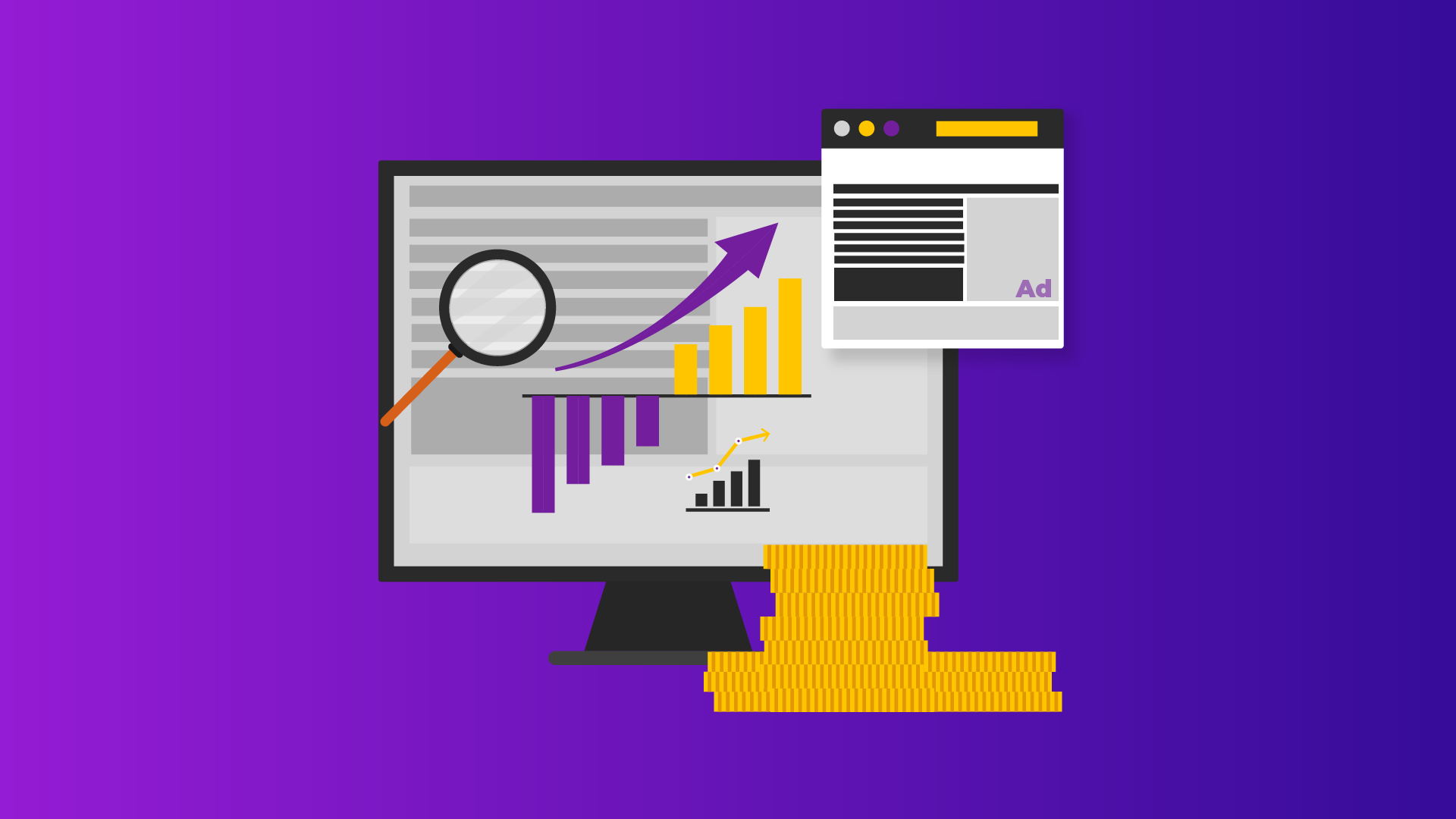Ad Yield Management: Strategies for Publishers
In the dynamic world of content creation and programmatic advertising, generating revenue is a fundamental goal for any publisher. However, what separates thriving publishers from the rest is their ability to not just make revenue but to maximize it to its fullest potential. The gap between generating revenue and maximizing it often hinges on a strategic approach known as yield management—a concept that can be the missing factor in achieving optimal financial outcomes.
Yield management in the context of publishing is all about optimizing ad inventory to improve ad revenue while ensuring user satisfaction. It’s a delicate balancing act, akin to crafting the perfect blend of content and advertising within your digital real estate.
Let’s explore how publishers can strategically adjust ad placement, pricing, and formats to strike the ideal equilibrium between revenue generation and audience engagement.
What is yield management for publishers?
Yield management, often referred to as revenue management, is a strategic approach used by publishers to optimize pricing and resource allocation in order to maximize revenue and profitability. It’s about finding the perfect balance between getting the most out of your resources while still providing value to your customers.
At its core, yield management involves adjusting prices, product availability, and resource allocation in response to changing market conditions, customer demand, and other factors. The primary goal is to sell the right product or service to the right customer at the right time and at the right price.
It’s a vital strategy employed in the realm of ad tech, specifically by publishers. Whether you’re running a website, a mobile app, or any digital platform that offers ad space, yield management plays a pivotal role in optimizing your revenue potential.
What is an example of yield management for publishers?
let’s consider a news publishing site. During significant events like a highly anticipated product launch, a major political election, or a widely-watched sports championship, the demand for ad space on their website is exceptionally high. In this scenario, yield management for publishers would entail adjusting advertising rates and allocation strategies to make the most of this increased demand.
The publisher might choose to:
- Raise Ad Prices: Similar to the hotel raising room prices during peak seasons, the publisher could increase the rates for ad placements on their website during high-demand events. Advertisers looking to reach a larger audience during these events would be willing to pay a premium for prime ad positions.
- Prioritize Premium Advertisers: The publisher could prioritize premium advertisers or partners during these events, ensuring that their high-value ads get prominent placement. This not only maximizes revenue but also strengthens relationships with key advertisers.
- Optimize Ad Layout: Yield management for publishers also involves optimizing the layout of ad units on their website. During peak events, they might allocate more screen real estate to ads, ensuring that they capture the attention of the increased audience.
- Utilize Targeting and Data: Leveraging data and targeting capabilities, the publisher can deliver more relevant ads to users, increasing the effectiveness of ad campaigns and, in turn, the value of their ad inventory.
What are the benefits of yield management for publishers?
Yield management offers several significant benefits for publishers in the digital advertising industry. Here are some of the key advantages:
- Maximized Revenue
Perhaps the most prominent benefit of yield management is the ability to maximize revenue. By optimizing pricing and ad inventory allocation, publishers can ensure they get the highest possible return on their ad space.
- Improved Profitability
Yield management strategies often lead to improved profitability, as publishers can extract more value from their existing resources without significantly increasing costs.
- Better User Experience
Effective yield management ensures that ads are displayed in a way that doesn’t overwhelm or annoy users. This contributes to improving user experience, which can lead to higher engagement and retention rates.
- Competitive Edge
Yield management allows publishers to stay competitive in the digital advertising landscape. They can attract premium advertisers, offer targeted ad placements, and adapt to changing market conditions more effectively.
- Data-Driven Insights
Implementing yield management requires data analysis and tracking. This data can provide valuable insights into user behavior, ad performance, and market trends, helping publishers make informed decisions.
- Flexible Pricing Strategies
Publishers can experiment with different pricing strategies, such as dynamic pricing, tiered pricing, or event-based pricing, to find the most effective approach for their specific audience and content.
- Increased Efficiency
Yield management automates many aspects of ad inventory management, reducing the need for manual intervention. This leads to increased operational efficiency and cost savings.
- Diverse Revenue Streams
Publishers can diversify their revenue streams and take their website monetization to the next level by offering various ad formats (e.g., display ads, video ads, native ads) and optimizing each for maximum yield.
- Ad Inventory Optimization
Yield management helps publishers avoid overcommitting or underselling their ad inventory, ensuring that every ad impression is monetized effectively.
- Risk Mitigation
By closely monitoring and adjusting their ad strategies, publishers can mitigate risks associated with fluctuations in ad demand, market dynamics, or changes in user behavior.
What are the tools publishers need for yield management?
Yield management for publishers involves a combination of tools, strategies, and platforms to optimize ad revenue. Here are some of the essential tools and technologies:
- Real-Time Bidding (RTB)
RTB is programmatic advertising is very crucial. It enables publishers to auction their ad inventory in real-time, allowing advertisers to bid on individual ad impressions. RTB maximizes revenue by ensuring that each ad impression is sold to the highest bidder.
- Header Bidding
Mastering header bidding and learning how to set up header bidding are vital for every publisher for yield management. It allows publishers to offer their ad inventory to multiple ad exchanges simultaneously before making an ad call to their primary ad server. This competition among demand sources often results in higher prices for ad impressions.
- Ad Server
An ad server is a central component of ad management for publishers. It helps publishers schedule, target, and deliver ads to their audience. Modern ad servers often have advanced features like ad prioritization and ad rotation to optimize yield.
- Ad Exchange
Ad exchanges are platforms that facilitate the buying and selling of ad inventory. Publishers can connect to various ad exchanges to access a wide range of demand sources, increasing competition and potentially boosting ad rates.
- Demand-Side Platforms (DSPs)
Publishers can leverage DSPs to manage their relationships with advertisers and agencies. DSPs provide tools for ad buying, targeting, and campaign management, enhancing publishers’ abilities to attract premium advertisers.
- Data Management Platforms (DMPs)
DMPs enable publishers to collect, store, and analyze user data. By understanding user behavior and preferences, publishers can implement behavior targeting strategies and deliver more relevant ads, thereby increasing the value of their ad inventory.
- Supply-Side Platforms (SSPs)
SSPs are designed for publishers to manage and optimize their ad inventory. They provide controls to set floor prices, manage ad formats, and integrate with multiple demand sources, including RTB and header bidding.
- Ad Quality Tools
Ad quality tools serve as vital aids for publishers, helping ensure mobile-friendliness, compliance with regulations, suitable ad placements, optimized page load speeds, ad format adherence, security, performance insights, enhanced user experience, ad blocker compatibility, cross-browser consistency, and brand safety, all contributing to maintaining high-quality ads and a positive user environment.
- Analytics and Reporting Tools
Robust analytics and reporting tools, including advanced platforms like Google Analytics 4 (GA4), are indispensable for gauging the efficacy of yield management strategies. These tools offer in-depth insights into various aspects of ad performance, user engagement, and revenue trends.
Successful yield management for publishers requires a comprehensive understanding of these tools and the ability to integrate them effectively into their digital advertising strategies. By harnessing these technologies, publishers can optimize their ad revenue, improve user experiences, and stay competitive in the ever-evolving ad tech landscape.
How can publishers create a yield management strategy?
A successful yield management strategy for publishers encompasses a series of interconnected steps and considerations. At its core, this strategy is all about striking a delicate balance between maximizing ad revenue and delivering a seamless user experience.
Step 1: Audience Understanding
Understanding your audience is paramount. Dive deep into demographics, behaviors, and preferences to develop a comprehensive user profile. This knowledge forms the foundation of your content and ad targeting strategies.
Step 2: Ad Inventory Assessment
Evaluate your ad inventory thoroughly. Consider the strengths and weaknesses of each ad space, format, and placement. This assessment is crucial for optimizing revenue potential while maintaining a positive user experience.
Step 3: Clear Objective Setting
Set clear objectives for your yield management strategy. Whether you aim for increased revenue, higher ad engagement, or an improved user experience, well-defined goals guide your decision-making throughout the strategy.
Step 4: Data Collection Implementation
Implement data collection tools, such as Google Analytics, to gather valuable insights into user behavior, ad performance, and website traffic. This data-driven approach is essential for informed decision-making.
Step 5: Ad Placement Strategy
Develop a comprehensive ad placement strategy across your digital properties. Strike a balance between ad density and user experience, ensuring that ads do not disrupt navigation or content consumption.
Step 6: Pricing Strategy
Establish dynamic pricing models that consider factors like seasonality, demand fluctuations, and user segments. Implement mechanisms for real-time pricing adjustments to maximize revenue potential.
Step 7: Ad Quality Control
Implement ad quality tools to ensure that ads meet industry standards, load quickly, and don’t disrupt the user experience. Regularly monitor and block low-quality or malicious ads to maintain a positive brand image.
Step 8: Behavioral Targeting
Leverage user behavior data to implement behavioral targeting strategies. Deliver highly relevant ads to users based on their interests and actions, enhancing ad engagement and revenue potential.
Step 9: Mobile Optimization
Ensure that your website and ads are mobile-friendly. Optimize for responsive design, fast loading times, and seamless user experiences on mobile devices. In an era where mobile devices dominate online access, mobile optimization is paramount. Users expect websites and ads to function smoothly on smartphones and tablets. To meet this demand, publishers should adopt responsive design principles, ensuring that content and ads adapt seamlessly to various screen sizes.
Step 10: Header Bidding and Real-Time Bidding (RTB)
Implement header bidding and real-time bidding strategies to maximize ad revenue. These techniques create competition among demand sources and help you secure the highest bids for ad impressions.
By opening up your ad inventory to multiple demand sources simultaneously, you enable advertisers to bid on individual ad impressions in real-time. This competitive environment often results in higher ad rates, as advertisers vie for prime ad placements.
Step 11: Ad Inventory Optimization
Continuously analyze the performance of your ad inventory. Remove underperforming ad units and prioritize high-demand placements to maximize ad yield. Conduct A/B tests and experiments to refine your ad strategies. Test different ad formats, layouts, pricing models, and targeting approaches to identify what resonates best with your audience.
Step 13: Monitor and Analyze
Regularly monitor ad performance, user engagement, and revenue trends using analytics tools. Use these insights to make data-driven decisions and refine your yield management approach.
Continuously tracking key performance indicators (KPIs) like ad click-through rates, viewability, user session durations, and revenue trends provides real-time insights into how your strategy is performing.
Yield management is not just a strategy; it’s a multifaceted approach that lies at the heart of a publisher’s success in the dynamic world of digital advertising. It empowers publishers to unlock the full potential of their ad revenue while ensuring a seamless and satisfying user experience. Well-defined objectives serve as guiding stars, helping publishers stay on course toward their revenue and performance goals. With yield management publishers can navigate the ever-evolving landscape of digital advertising with confidence,




Leave a Reply